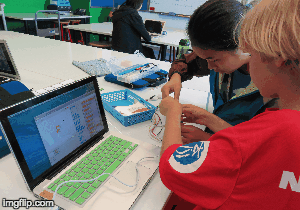
Image Credit: Creative Commons from Pixabay
As teachers, we always look out on those first promising days thinking “we are teaching the leaders of the world”.
For some of us, it’s a promise, it’s a responsibility, it’s hope, or inspiration that gets us excited to start a new year, and sometimes it just gets us through a tough day, class or year. But it’s true. We are lucky. We can have that impact. We do influence future leaders, followers and everything in between.
Frequently, our students will inherit a family business or walk into leadership roles with little to no work experience. They already have money, power, and influence regardless of their education.
But do they have the skills and experience to be a positive influence in their business, community and to their co-workers? How can we help guide our students to be more responsible, kind, strong leaders of businesses, industries, and even countries?
Most international teachers I’ve worked with have come from a middle-class upbringing which is very different from what our students and even our own children are experiencing. Some of us started earning our own money and had to be independent and made our own decisions at a young age. Most of us learned so much at our first or tenth job, and most of our students never will have these experiences and environments to learn, fail and grow. Often times, standard curriculums don’t provide this knowledge or skills sets to collaborate, lead, learn and be responsible citizens of the future.
So what are we doing to provide these students with leadership skills and opportunities to fail and grow? How are we fostering responsible consumers and producers?
While we don’t have all the answers, I think ISB is moving in the right direction to help our students be more prepared for being compassionate, responsible citizens or leaders in any field. We are putting a stronger focus on social and emotional learning while providing more interdisciplinary experiences to engage in deep, relevant learning. We are fostering cross-curricular skills by giving our students authentic tasks to demonstrate their knowledge and skills. We are reviewing our experiential learning programs and we provide dynamic robust professional learning for our community. It is definitely work that has started, it’s not happening everywhere, we are growing as educators and these hopefully more deep, relevant hands-on learning experiences at school will become more prevalent over the next few years.

Image Credit: Creative Commons via PixaBay
We are very lucky to have bright, engaged students who do well in school, but what traditional schools have done for the past hundred years aren’t preparing our students for their future jobs or to be responsible, compassionate transformational leaders.
What I wonder is what happens when the qualified teachers, coaches & tutors are gone. How do our students continue to learn and grow? I think then we will truly know how prepared our students are for their futures.













